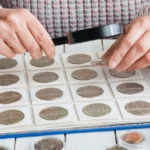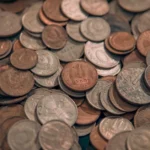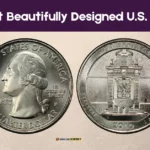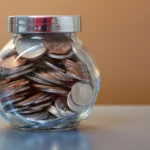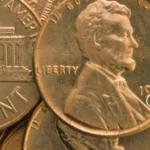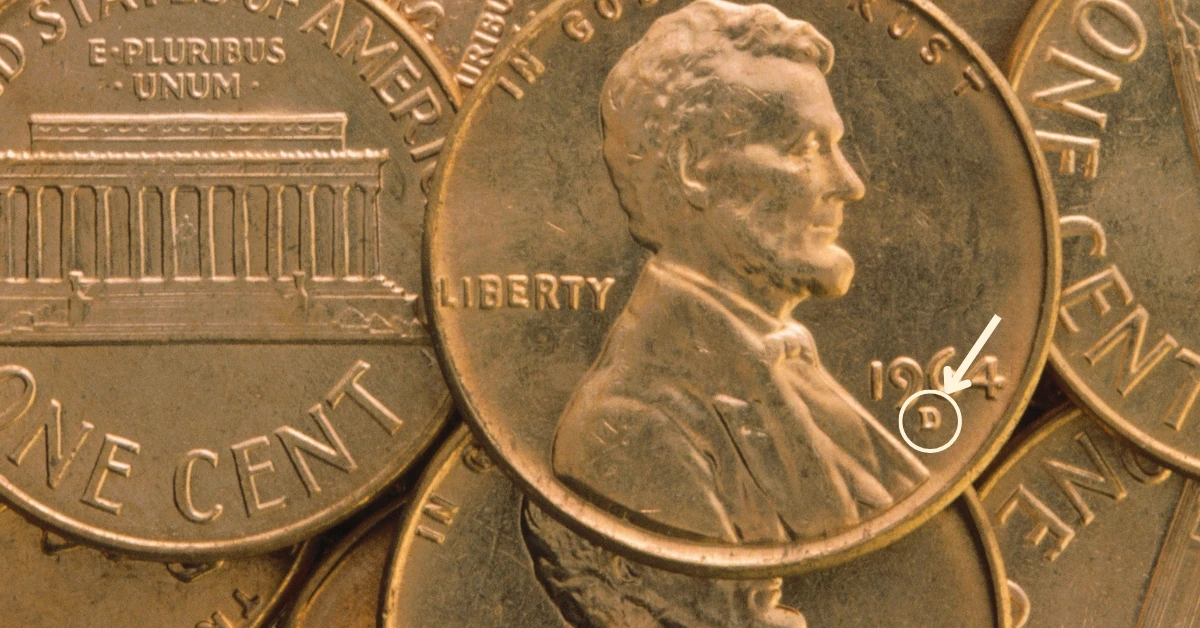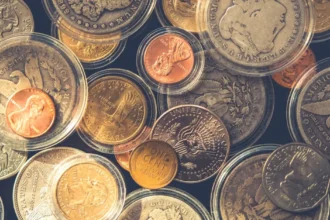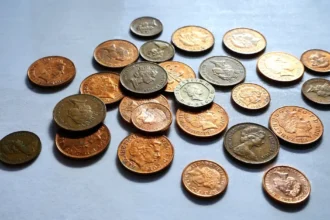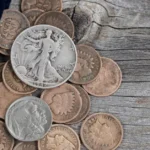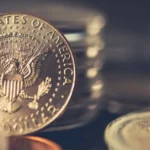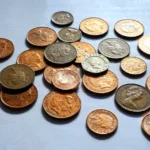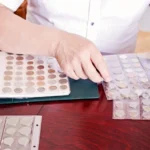Introduction
Mint marks are small symbols that tell a big story about a coin. These tiny letters or symbols, found on coins from all over the world, show where the coin was made. For coin collectors and history fans, mint marks are like clues that reveal a coin’s origin, prove it’s real, and even hint at how much it might be worth.
Whether you’re just starting to learn about coin collecting or you’ve been at it for years, knowing about mint marks is very important. This simple guide will explain what mint marks are, why they matter, and how to find them. By understanding mint marks, you’ll discover the hidden stories your coins hold. So, let’s explore the fascinating world of mint marks and see why they’re such an important part of coin collecting!
What Are Mint Marks?
Mint marks are small letters, symbols, or inscriptions on coins that indicate the specific mint where the coin was produced. These marks are typically found on the obverse (front) or reverse (back) side of a coin, though their exact placement varies by country, era, and coin type.
Mint marks play a vital role in the world of coin collecting and numismatics. They serve as identifiers that provide valuable information about a coin’s origin, including:
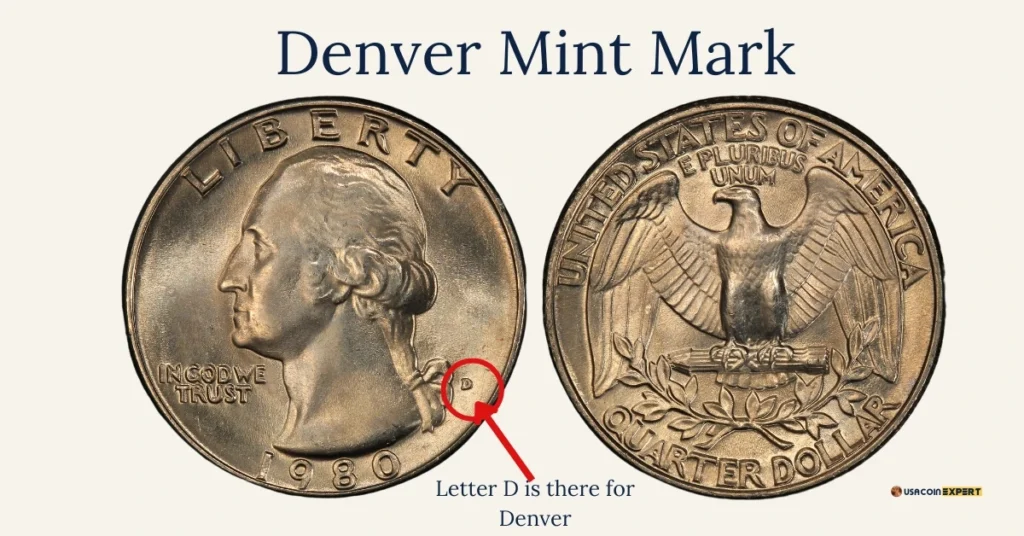
- Geographical Origin: Mint marks reveal which mint facility produced the coin. For example, in the United States, a “D” indicates the Denver Mint, while an “S” refers to the San Francisco Mint.
- Historical Context: By identifying the mint, collectors can trace a coin’s production to a specific location and time period, adding depth to its historical significance.
- Authentication: Mint marks are crucial for verifying the authenticity of coins. Counterfeit coins often lack accurate mint marks or place them incorrectly, making this small detail an essential tool for collectors.
Learning about mint marks helps collectors tell the difference between regular coins and rare ones. This knowledge makes their collection valuable and teach them about the history of the Coins.
Why Are Mint Marks Important?
Mint marks may seem like small, insignificant details, but they play a crucial role in the world of coin collecting and numismatics. Here’s why mint marks are important:
1. Identifying the Origin of a Coin
Mint marks indicate the specific mint facility where a coin was produced. This helps collectors and historians trace the geographical origin of the coin. For example:
- A coin with a “P” was minted in Philadelphia.
- A coin with a “D” came from the Denver Mint.
This information adds historical context and tells a story about the coin’s production.
2. Determining Rarity and Value
Coins from certain mints may be rarer than others due to limited production runs or the closure of specific mints. For example:
- Coins with the “CC” mint mark from the Carson City Mint are highly sought after because of their rarity.
- Coins from lesser-known or defunct mints often carry a higher value in the numismatic market.
For collectors, identifying a rare mint mark can mean discovering a valuable treasure.
3. Verifying Authenticity
Mint marks are essential for confirming the authenticity of coins. Counterfeiters often neglect to replicate mint marks correctly, or they place them inaccurately. Knowledge of correct mint marks and their placement helps collectors avoid forgeries.
4. Building Comprehensive Collections
Mint marks allow collectors to focus their efforts on creating specialized collections, such as:
- A complete set of Lincoln pennies from all mints.
- A series of Morgan silver dollars, including coins from rare mints like Carson City (CC) or New Orleans (O).
These collections become more valuable and meaningful with the inclusion of coins from diverse mint origins.
5. Understanding Historical and Economic Trends
Mint marks also offer insights into the economic and historical conditions of their time. For example:
- Coins minted during wartime may reflect changes in materials or reduced mint production.
- Certain mints operated only during specific periods, marking their coins as unique historical artifacts.
Mint Marks in the United States
The United States Mint has used mint marks for over two centuries to indicate the facility where a coin was struck. Each mint has its own unique history and significance, and the mint marks associated with these facilities provide valuable information for collectors.
The Most Common U.S. Mint Marks
- P – Philadelphia Mint
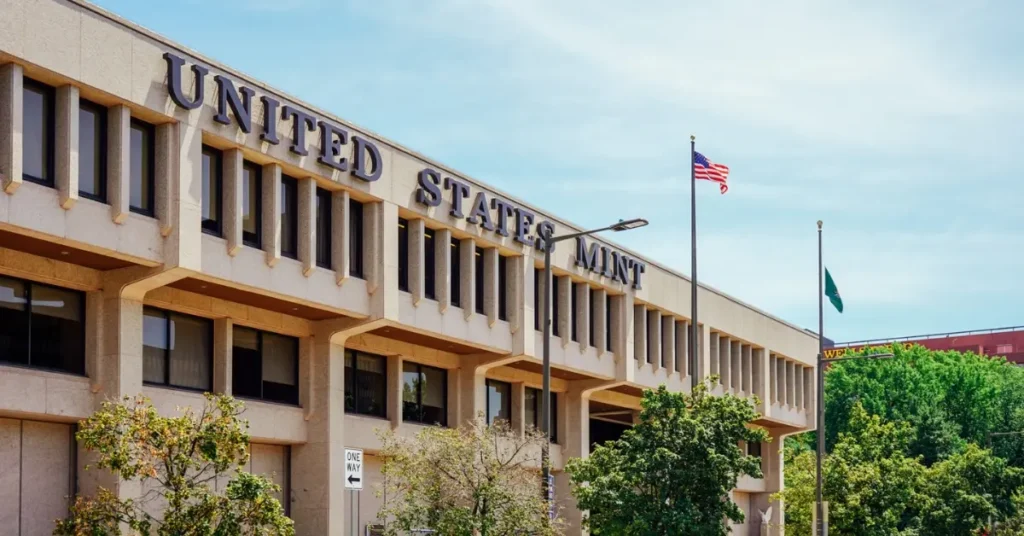
- The Philadelphia Mint is the first and largest mint in the United States, established in 1792.
- It produces a wide variety of coins, including circulating coins, commemoratives, and bullion.
- For many years, Philadelphia coins did not carry a mint mark; however, starting in 1980, the “P” mark began appearing on most coins.
2. D – Denver Mint
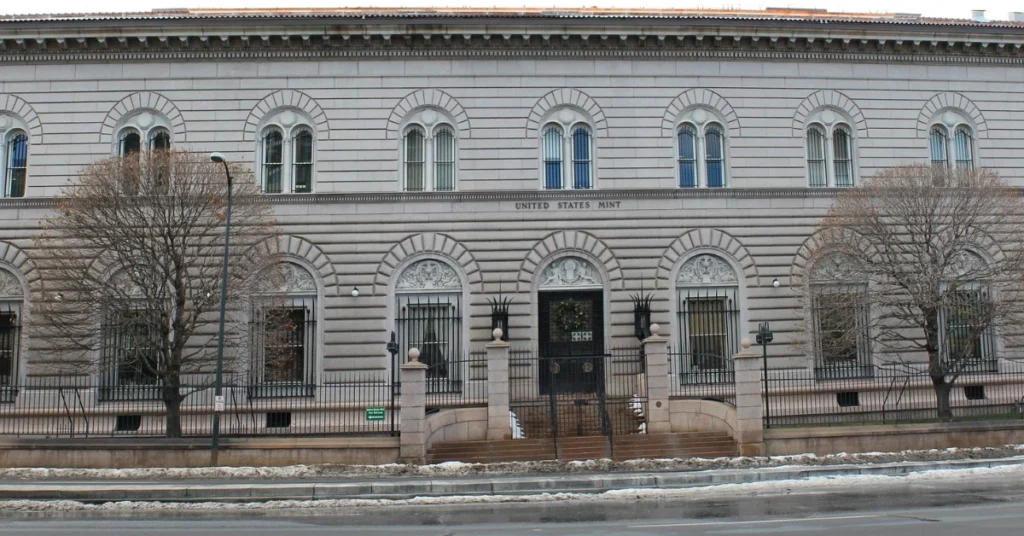
- The Denver Mint opened in 1906 and primarily focuses on producing circulating coins.
- Coins with a “D” mint mark are widely distributed and play a major role in the U.S. monetary system.
3. S – San Francisco Mint

- Established in 1854 during the California Gold Rush, the San Francisco Mint originally focused on minting gold coins.
- Today, it primarily produces proof coins for collectors, which are known for their sharp details and mirror-like finishes.
4. W – West Point Mint
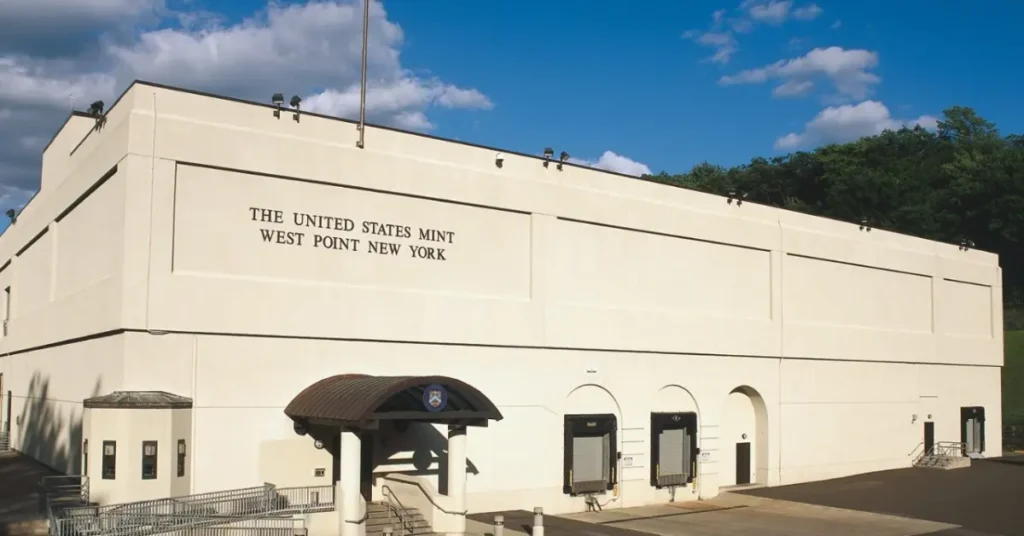
- The West Point Mint began producing coins in 1937 and received its official mint status in 1988.
- Coins with the “W” mint mark include limited-edition commemoratives, bullion, and collector-grade coins.
Rare and Historical U.S. Mint Marks
- CC – Carson City Mint
- The Carson City Mint operated from 1870 to 1893 and is famous for its production of silver dollars and gold coins.
- Coins with the “CC” mint mark are highly sought after due to their rarity and historical significance.
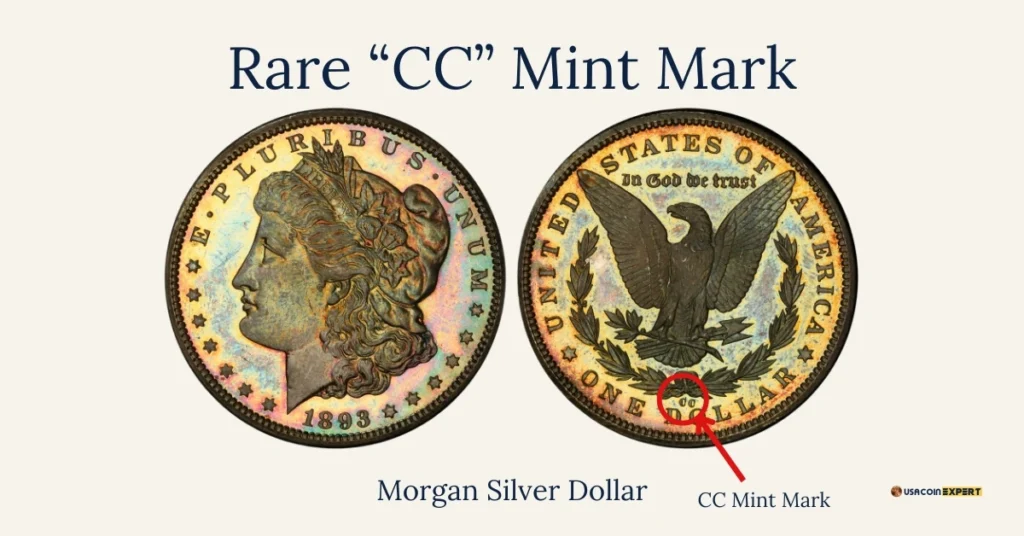
- O – New Orleans Mint
- Opened in 1838, the New Orleans Mint struck coins until its closure in 1909.
- The “O” mint mark is found on many 19th-century coins, including Liberty Head nickels and Morgan silver dollars.
- C, D, and Charlotte Mint Marks
- These mint marks were used by short-lived mints in the 19th century, such as:
- C – Charlotte, North Carolina (1838–1861): Produced gold coins only.
- D – Dahlonega, Georgia (1838–1861): Also focused exclusively on gold coins.
- These mint marks were used by short-lived mints in the 19th century, such as:
Where to Find U.S. Mint Marks on Coins
- Modern Coins: Mint marks are usually found near the date on the obverse (front).
- Older Coins: The location of the mint mark varies; for example:
- On Morgan silver dollars, the mint mark is on the reverse, below the wreath.
- On Lincoln cents, it is below the date on the obverse.
Where to Find Mint Marks on Coins
Mint marks are small but essential details on coins, providing clues about their origin and historical significance. However, the location of mint marks varies depending on the type of coin, its country of origin, and its era of production. Knowing where to look is key for both beginner and seasoned collectors.
1. Common Locations for Mint Marks
Mint marks are usually placed in discreet areas to maintain the overall design of the coin. Here are the most common locations:
- Near the Date: On many coins, mint marks are located close to the year of issue. For example:
- U.S. Lincoln Cents: Below the date on the obverse (front) side.
- Quarters and Dimes: Next to or slightly below the date.
- On the Reverse Side: Some coins display mint marks on the back (reverse) side, often near a prominent design element.
- Morgan Silver Dollars: Below the wreath on the reverse side.
- Washington Quarters (pre-1965): On the reverse, below the eagle.
- On the Coin’s Edge: Certain modern coins, such as commemoratives or bullion coins, may feature mint marks along the edge for added security and design aesthetics.
2. Variations by Era
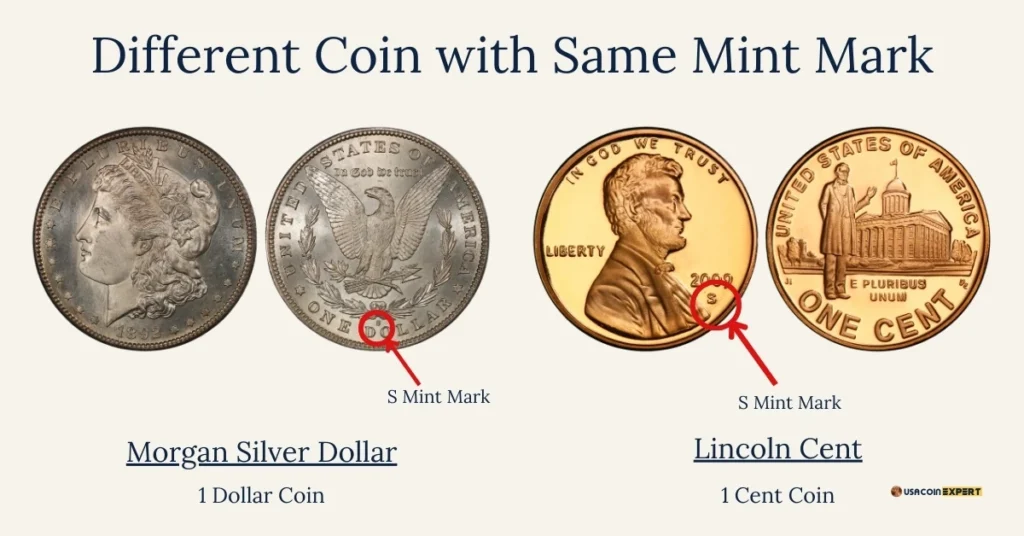
The location of mint marks can differ significantly depending on when the coin was produced:
- Early U.S. Coins: Many early coins, especially those minted before the mid-19th century, did not feature mint marks. Their absence often signifies production at the Philadelphia Mint, which was the only U.S. mint in operation at the time.
- Mid-20th Century Coins: As more mints came into operation, mint marks became more standardized, often placed near the date for easy identification.
- Modern Coins: Today, mint marks are prominently displayed on most coins, especially those intended for collectors, such as proof sets and commemorative editions.
3. Foreign Coins
Mint marks on coins from other countries follow different conventions:
- European Coins: Mint marks are often integrated into the coin’s design, sometimes near the denomination or national emblem.
- Canadian Coins: The Royal Canadian Mint uses symbols like a small maple leaf to indicate minting location or special editions.
4. Tools for Spotting Mint Marks
Since mint marks are small, spotting them can be challenging. Here are some tips:
- Magnifying Glass: A magnifying tool is invaluable for examining small details on a coin.
- Lighting: Proper lighting can help reveal mint marks that may be worn or faint.
- Reference Guides: Use numismatic catalogs or online databases to identify the expected location of mint marks on specific coins.
Tips for Identifying Mint Marks
Identifying mint marks on coins is a key skill for any coin collector. These small details can be elusive, especially on older or worn coins, but with the right tools and techniques, spotting mint marks becomes much easier. Here are some practical tips to help you identify mint marks with confidence:
1. Use a Magnifying Glass or Loupe
- Mint marks are often tiny and may not be visible to the naked eye.
- Invest in a quality magnifying glass or jeweler’s loupe with 5x to 10x magnification for a clear view of small details.
2. Check the Common Locations
- Mint marks are typically found:
- Near the date on the obverse (front) side of the coin.
- On the reverse (back) side, near prominent design features.
- Along the edge for certain modern or commemorative coins.
- Refer to numismatic resources to learn the specific location for different coins.
3. Examine Coins Under Proper Lighting
- Bright, even lighting helps highlight small details like mint marks.
- Use a desk lamp with an adjustable neck to avoid shadows.
- Natural daylight is also excellent for examining coins.
4. Inspect for Wear and Damage
- On older coins, mint marks may be worn down or obscured due to circulation.
- Carefully study the area where the mint mark is expected; subtle outlines or remnants may still be visible.
5. Clean Coins Only When Necessary
- Avoid cleaning coins unless absolutely necessary, as improper cleaning can damage the surface and diminish value.
- If cleaning is needed, consult a professional or use non-abrasive methods.
6. Use Reference Guides
- Coin catalogs, such as the “Red Book” for U.S. coins, provide detailed information about mint mark locations for various coins.
- Online numismatic resources and forums can also help identify specific mint marks.
7. Compare with Known Examples
- If you’re unsure about a mint mark, compare your coin to known examples from reputable sources.
- This can help confirm the mint mark’s authenticity and placement.
8. Pay Attention to Counterfeit Indicators
- Counterfeit coins may have inaccurate or misplaced mint marks.
- Check that the mint mark aligns with the coin’s design, date, and expected mint origin.
9. Invest in a Coin Microscope
- For advanced collectors, a digital coin microscope can provide an up-close view of mint marks and other intricate details.
- Many microscopes allow you to take pictures for further analysis or sharing with other collectors.
10. Consult a Numismatist
- If you’re having difficulty identifying a mint mark, consider consulting a professional numismatist or visiting a coin dealer.
- Experts can help you identify mint marks and evaluate your coin’s authenticity and value.
Special Cases: Coins Without Mint Marks
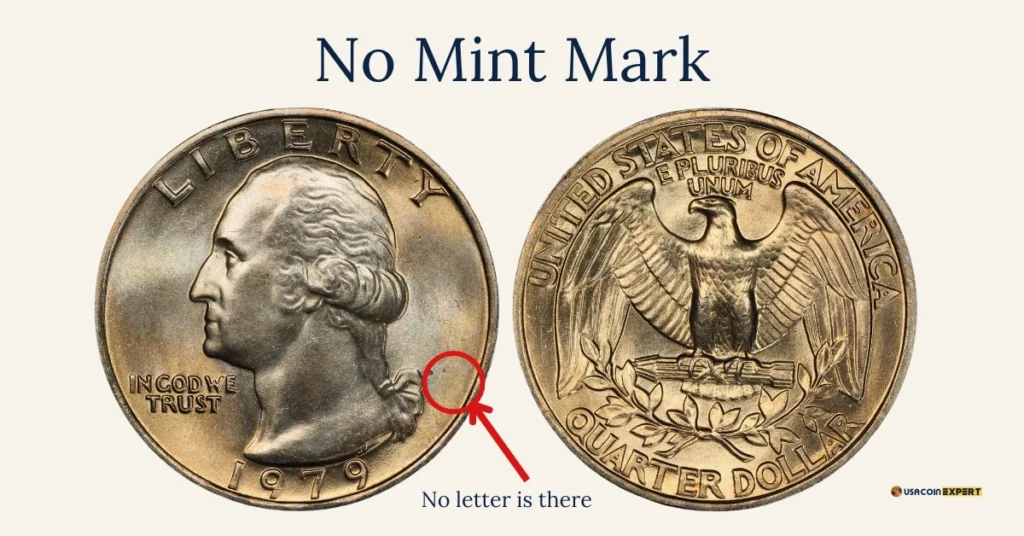
While mint marks are a common feature on many coins, there are instances where coins lack them entirely. Coins without mint marks can create confusion for new collectors, but they often carry special significance. Here’s what you need to know about these exceptions:
1. Coins Produced at the Primary Mint
- In many countries, coins struck at the primary mint often do not carry a mint mark. For example:
- United States Coins: Coins minted in Philadelphia (the first U.S. mint) were historically produced without a mint mark. This was the default until the late 20th century, as Philadelphia was the principal mint.
- Starting in 1980, the “P” mint mark began appearing on most coins, except for the Lincoln cent, which remained without a mint mark until 2017.
2. Special Minting Runs
- Some coins are intentionally produced without mint marks as part of special minting decisions:
- Proof Coins Without Mint Marks: Occasionally, proof coins may lack a mint mark due to errors or special editions, making them more valuable to collectors.
- Commemorative Coins: In some cases, commemorative coins may omit mint marks to align with design choices or minting traditions.
3. Error Coins
- Coins that should have a mint mark but lack one due to minting errors are highly sought after by collectors. These “error coins” can be rare and valuable.
- Example: The 1922 “No D” Lincoln penny is a famous error coin, where the Denver mint mark was accidentally omitted.
4. Wartime and Emergency Minting
- During times of war or economic crisis, some mints may omit mint marks to streamline production or for security reasons.
- World War II U.S. Coins: During the war, certain coins were struck without mint marks to prioritize efficiency over design.
5. Counterfeit or Altered Coins
- Coins without mint marks can sometimes be counterfeit or altered to mislead collectors. Careful examination and authentication are necessary to avoid falling for such forgeries.
6. Misconceptions About Value
- Not all coins without mint marks are rare or valuable. Their worth depends on the specific coin, its year of production, and historical context.
- Philadelphia-Minted Coins: Many collectors mistakenly believe that all coins without mint marks are rare, when in fact, many were simply minted in Philadelphia and are common.
How to Identify Coins Without Mint Marks
- Consult a reliable coin catalog or guide to determine if the lack of a mint mark is typical for the coin in question.
- Use tools like magnifying glasses or digital microscopes to inspect the area where the mint mark should be.
Collecting Coins by Mint Marks
Collecting coins by mint marks is an exciting and rewarding way to explore the world of numismatics. Mint marks provide valuable information about a coin’s origin and rarity, making them an excellent focal point for building a specialized collection. Here’s how to approach this unique and fascinating collecting strategy:
1. Understanding the Appeal of Mint Mark Collections
- Diversity: Coins from different mints often have subtle design variations, making a collection more diverse and interesting.
- Rarity: Some mint marks are associated with low production numbers, increasing the desirability and value of the coins.
- Historical Significance: Collecting coins from now-defunct mints, such as Carson City (CC) or New Orleans (O), adds a layer of historical depth to your collection.
2. Choosing a Focus for Your Collection
There are various ways to structure a mint mark collection:
- Complete Mint Sets:
- Collect all coins of a specific denomination and year, each from every mint where they were produced (e.g., Lincoln pennies from Philadelphia, Denver, and San Francisco for a particular year).
- Rare Mint Marks:
- Focus on coins with rare or historically significant mint marks, such as CC for Carson City or C for Charlotte.
- One Coin from Every Mint:
- Assemble a collection representing each U.S. mint, including current and defunct facilities.
3. Popular Coins for Mint Mark Collections
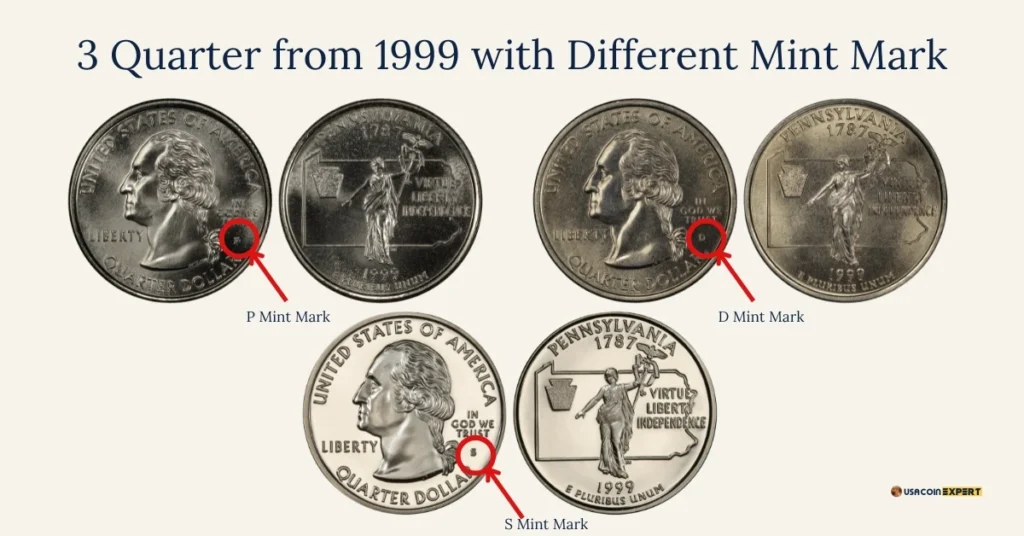
Certain coin series are particularly well-suited for mint mark collecting:
- Lincoln Cents (1909–present):
- Collect pennies from Philadelphia (P), Denver (D), and San Francisco (S). Don’t forget key dates, like the 1909-S VDB.
- Morgan Silver Dollars (1878–1921):
- A classic choice, with coins from Philadelphia, Denver, San Francisco, Carson City (CC), and New Orleans (O).
- State Quarters and America the Beautiful Quarters:
- Modern series with coins from Philadelphia and Denver, making it easier to complete a set.
4. Tips for Collecting by Mint Marks
- Research Production Numbers:
- Check mintage statistics to identify coins with lower production numbers, which are often more valuable.
- Start Small:
- Begin with a manageable series, such as Jefferson nickels or Roosevelt dimes, before expanding to more complex collections.
- Invest in Reference Materials:
- Use coin guides and online databases to understand which mint marks were used for each coin series.
- Condition Matters:
- While collecting by mint marks, aim for coins in the best condition you can afford. Higher grades often have better long-term value.
- Storage and Organization:
- Use labeled albums or display cases to keep your collection organized by mint mark, year, and denomination.
5. Challenges and Rewards
- Challenges:
- Locating rare mint marks or completing a set for certain years can be time-consuming and expensive.
- Older coins with worn mint marks require careful examination to authenticate.
- Rewards:
- The satisfaction of completing a mint-marked set is unmatched.
- A well-curated mint mark collection can become a valuable asset, both financially and historically.
6. Expanding Beyond U.S. Coins
- Many collectors enjoy exploring foreign coins with mint marks. Countries like Canada, the United Kingdom, and India also use mint marks to denote production locations.
7. Selling and Valuing a Mint Mark Collection
- Collections focused on mint marks often attract buyers, especially when they include rare coins or complete sets.
- Regularly appraise your collection to stay informed about its market value.
Care and Storage for Coins
Proper care and storage of coins are essential to preserve their condition, value, and historical significance. Coins are delicate items that can be easily damaged by improper handling or environmental factors. Here’s a comprehensive guide to ensure your coin collection remains in pristine condition for years to come.
1. Handling Coins with Care
- Wear Gloves:
- Use cotton or nitrile gloves to handle coins, as natural oils and dirt from your hands can tarnish the surface.
- Hold Coins by the Edges:
- Avoid touching the obverse or reverse surfaces to prevent fingerprints, scratches, or smudges.
- Avoid Dropping Coins:
- Always handle coins over a soft surface, like a padded table or cloth, to minimize the risk of damage.
2. Cleaning Coins: Proceed with Caution
- Avoid Cleaning Coins:
- Cleaning coins can reduce their value, especially for rare or collectible pieces. Most collectors prefer coins with natural patina.
- Consult a Professional:
- If cleaning is absolutely necessary, seek advice from a professional numismatist or conservation expert.
3. Choosing the Right Storage Materials
- Coin Holders:
- Plastic Flips: Inexpensive and widely used, but ensure they are made of PVC-free materials to prevent chemical reactions.
- 2×2 Cardboard Holders: Economical and easy to label, but they provide less protection against environmental factors.
- Coin Albums:
- Great for organizing collections, but choose archival-quality albums to avoid chemicals that can damage coins.
- Airtight Holders:
- Ideal for high-value coins, these protect against air, moisture, and physical damage.
- Tubes and Capsules:
- Perfect for bulk storage of similar coins, such as rolls of pennies or silver rounds.
4. Protecting Coins from Environmental Damage
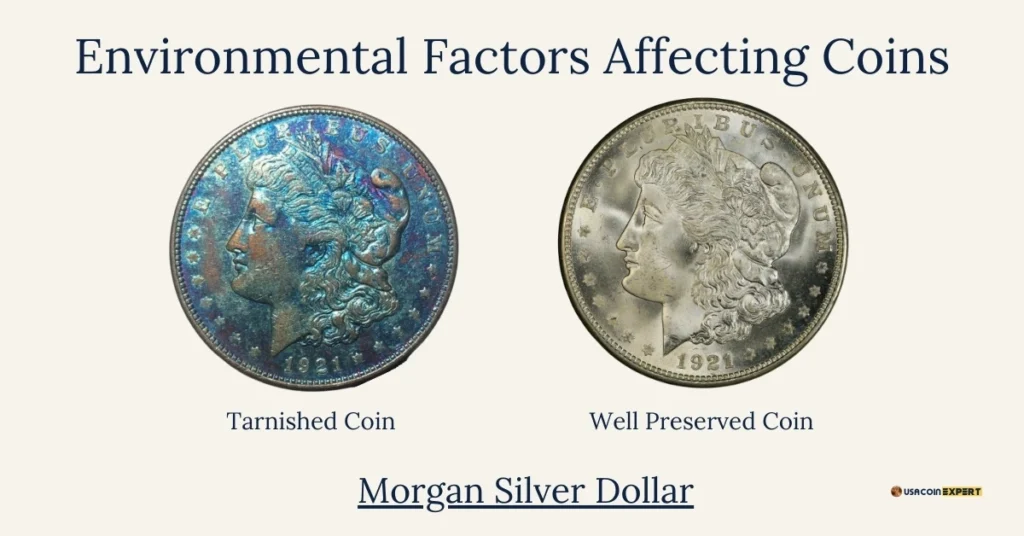
- Avoid Humidity:
- Store coins in a dry environment. High humidity can lead to corrosion and tarnishing.
- Control Temperature:
- Maintain a stable temperature; extreme fluctuations can cause metal expansion or contraction, leading to damage.
- Minimize Light Exposure:
- Keep coins away from direct sunlight, as ultraviolet (UV) rays can discolor or degrade certain metals.
- Use Silica Gel Packets:
- Place these packets in storage areas to absorb excess moisture and keep coins dry.
5. Organizing and Cataloging Your Collection
- Label and Document:
- Clearly label each coin with its date, mint mark, and any other relevant details. Consider creating a digital catalog for easy tracking.
- Separate by Material:
- Store coins made of different metals (e.g., silver, copper, gold) separately, as they may react differently to environmental factors.
6. Safe Storage Locations
- Use a Coin Safe:
- Store valuable collections in a fireproof, waterproof safe for added security.
- Safety Deposit Box:
- For rare or high-value coins, consider storing them in a bank’s safety deposit box to protect against theft or natural disasters.
- Avoid Damp Areas:
- Keep coins away from basements, attics, or garages, as these areas are prone to humidity and temperature fluctuations.
7. Long-Term Maintenance Tips
- Regular Inspections:
- Periodically check your coins for signs of corrosion, tarnishing, or damage.
- Repackage When Needed:
- Replace old or damaged storage materials to ensure continued protection.
8. Special Considerations for Rare or Valuable Coins
- Grading and Certification:
- Consider having valuable coins graded and encapsulated by professional services like PCGS or NGC for maximum protection and authenticity.
- Insurance:
- Insure your collection to protect against potential loss or damage.
Conclusion
Mint marks are much more than small details on coins; they are gateways to understanding the history, origin, and value of each piece. For beginner and seasoned collectors alike, learning about mint marks enhances the joy and depth of coin collecting. Whether you’re identifying the mint of a beloved coin, building a mint-specific collection, or preserving the legacy of rare and valuable pieces, the role of mint marks cannot be overstated.
By combining knowledge of mint marks with proper care and storage techniques, you can build a collection that not only holds personal significance but also serves as a testament to the rich history of currency. Start exploring mint marks today, and uncover the stories and treasures hidden in these tiny but powerful symbols. Happy collecting!
Frequently Asked Questions (FAQ) About Mint Marks
1. What is a mint mark?
A mint mark is a small letter or symbol stamped onto a coin to indicate the mint facility where it was produced. For example, in the United States, “P” stands for Philadelphia, “D” for Denver, and “S” for San Francisco.
2. Where can I find the mint mark on a coin?
The location of the mint mark varies by coin. Common places include:
Near the date on the obverse (front) side of the coin.
On the reverse (back) side, near the design elements.
On the edge of some modern coins.
3. Do all coins have mint marks?
No, not all coins have mint marks. For example:
Coins produced at the Philadelphia Mint often lacked mint marks until 1980.
Some special editions or error coins may be missing mint marks intentionally or accidentally.
4. Why are mint marks important?
Mint marks help:
Identify where a coin was minted.
Determine its rarity and value.
Authenticate its origin, which is crucial for collectors.
5. What are some rare U.S. mint marks?
Rare and sought-after U.S. mint marks include:
CC: Carson City Mint.
O: New Orleans Mint.
C and D: Charlotte and Dahlonega mints (gold coins only).
6. Are coins without mint marks valuable?
It depends on the coin. For example:
Coins from Philadelphia often lack mint marks and may not be rare.
Error coins missing mint marks due to a mistake can be valuable.
7. How can I tell if a coin’s mint mark is authentic?
To verify a mint mark:
Compare it with known examples from reference guides.
Check the placement and style for accuracy.
Consult a professional numismatist or coin grading service.
8. What tools can I use to identify mint marks?
Useful tools include:
A magnifying glass or jeweler’s loupe (5x to 10x magnification).
Reference guides like the “Red Book” for U.S. coins.
Digital microscopes for detailed inspection.
9. Can mint marks increase the value of a coin?
Yes, coins with rare or low-mintage mint marks are often more valuable. For example:
A Morgan silver dollar with a “CC” mint mark is more valuable than one from Philadelphia.
10. How should I store coins to preserve their mint marks?
To protect mint marks and overall coin condition:
Store coins in PVC-free holders or airtight capsules.
Avoid cleaning coins, as this can damage their surfaces.
Keep coins in a dry, temperature-controlled environment.
11. What should I do if I can’t find a mint mark?
If you don’t see a mint mark:
Check numismatic resources to confirm its expected location.
Inspect closely with proper lighting and magnification.
Consult a professional if the coin appears worn or damaged.
12. Can foreign coins have mint marks?
Yes, many foreign coins also use mint marks to identify production facilities. For example:
Canadian coins use symbols like a maple leaf.
European coins often incorporate mint marks near the denomination or emblem.



